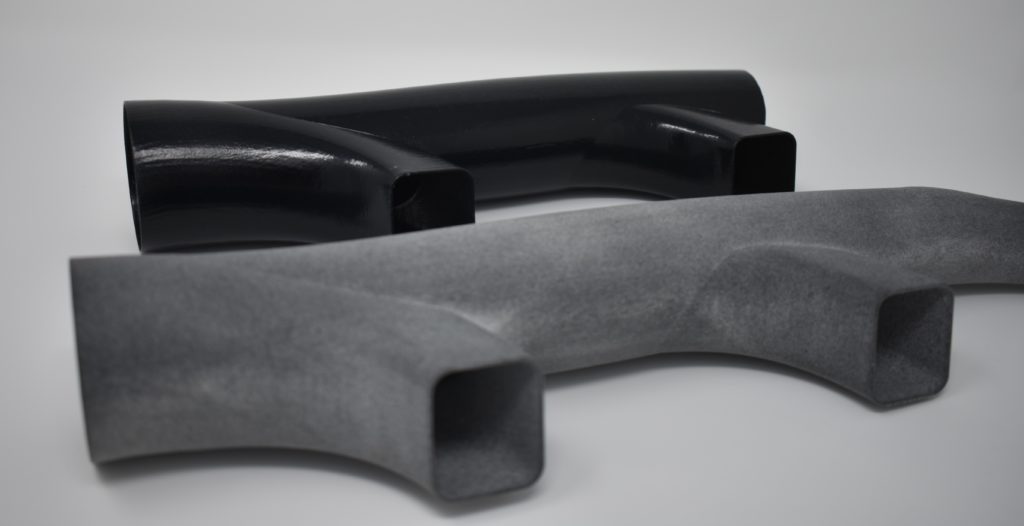In the April Issue of 3D ADEPT Mag, we have seen in the dossier discussed by Solukon, EOS and Rosler that post–processing is the part of the manufacturing process that intimidates professionals most. The post production stage consists in a series of additional manufacturing processes such as heat treatment to achieve desirable properties. This stage often represents nearly 30 percent of the manufacturing cost hence the importance to handle it wisely.
With its new solution, AMT positions itself in this new segment. According to the company, BLASTTM is a physio-chemical performance- and aesthetics-enhancing process that can smooth a wide variety of thermoplastic polymers. The solution would smooth surfaces and complex internal cavities of polymer 3D printed parts.
It enables reproducible results with no degradation of the mechanical properties of parts. Extensive testing has demonstrated no loss in Ultimate Tensile Strength (UTS) of parts with an increase in Elongation at Break (EAB). The increase in EAB is due to the reduction of crack initiation sites on the polymer surface due to the removal of surface porosity.

PostPro3DColor® and the PostPro3DMini®
Next to BLASTTM , the company also adds two new products to the PostPro3D® line: PostPro3DColor® and the PostPro3DMini®.
The first post-processing equipment can color 3D printed parts in a single step without using water and without disposable waste streams.
As for the PostPro3DMini®, it is designed for smaller production runs, STEM programs and design studios.
Joseph Crabtree, CEO at AMT says, “Our BLASTTM process seals the surface of the parts being processed removing porosity and thus sealing them against liquid or gas ingress. Our PostPro3D® systems make part surface finishing cost and speed competitive for high volume production and has been fully tested on products across a wide range of industry sectors including automotive, aerospace, sports, and footwear. In addition, parts processed in the PostPro3D® machines do not show a cytotoxic effect in accordance with ISO 10993-5, ISO 10993-1, and ISO 10993-12 which means they can be certified for medical use.”
For further information about 3D Printing, follow us on our social networks and subscribe to our newsletter! Would you like to be featured in the next issue of our digital magazine? Send us an email at contact@3dadept.com






